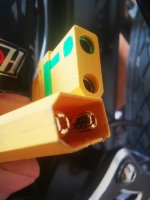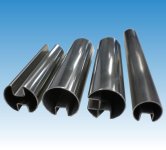nickceouk
10 W
- Joined
- Jan 18, 2020
- Messages
- 86
What could happen if I wired the polarity of the battery to the Baserunner controller wrong?
I was transitioning from test wiring to properly terminated connectors today and unfortunately made a big mistake.
When I connected and switched on the "magic smoke" came out and I switched off immediately.
I later looked at the wiring and the smell of something burnt was on the antispark xt90 connector.
Rewired everything properly and the controller seems to work.
What makes me suspicious that there might have been damage to BR is that the output when I throttle down the road is very jerky.
I then pressed the bike down standing next to it while applying the throttle and was able to stop the wheel from rotating. Weak throttle as I was expecting a 750w geared hub motor to be able pull the bike from under me in this test.
I know one of the key differences of BR compared to OEM Chinese controller is the torque vs speed based throttle. That's why I am unsure if the controller is damaged or if it's something to do with settings.
Is there a way to change from torque to speed because that's what I can compare with and know how the bike performed with OEM controller? Maybe some other settings or test?
I was transitioning from test wiring to properly terminated connectors today and unfortunately made a big mistake.
When I connected and switched on the "magic smoke" came out and I switched off immediately.
I later looked at the wiring and the smell of something burnt was on the antispark xt90 connector.
Rewired everything properly and the controller seems to work.
What makes me suspicious that there might have been damage to BR is that the output when I throttle down the road is very jerky.
I then pressed the bike down standing next to it while applying the throttle and was able to stop the wheel from rotating. Weak throttle as I was expecting a 750w geared hub motor to be able pull the bike from under me in this test.
I know one of the key differences of BR compared to OEM Chinese controller is the torque vs speed based throttle. That's why I am unsure if the controller is damaged or if it's something to do with settings.
Is there a way to change from torque to speed because that's what I can compare with and know how the bike performed with OEM controller? Maybe some other settings or test?



